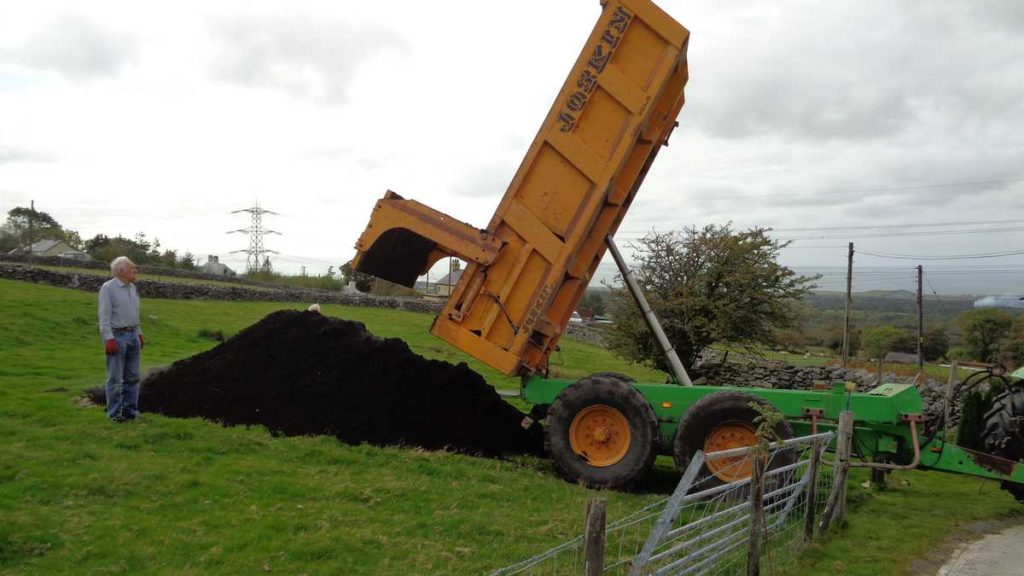Soil is the basis of all that we grow and eat. The better the soil, the better things grow and there is evidence that the crops are better for us. They say you are what you eat and that applies to plants as well. If they don’t have access to a wide range of minerals plants can not absorb them and, in turn, provide them to us.
I’ve always felt we have a duty to improve the land in our care. It might be a postage-stamp lawn, an allotment or a field but we should try to improve it. Our land is like a bank. We can save up and live on the interest forever or we can draw out the capital and eventually it’s gone.
We know now that the growing revolution that was artificial fertiliser was a bit of a bargain with the Devil. Yes, we got a big increase in yields both on a garden level and at field scales but there was a cost.
Over use of fertilisers damages the environment and because it allows very intensive cultivation, it encourages damage to the soil itself. Soil is a not just ground up rock, it’s a complex mix that depends on a host of microbes, fungi and creatures. Not least the worms, one of the best indicators to soil health I know.
Degraded soil is soil that has been mined to exhaustion, the nutrients used up and the soil life decimated or destroyed. Without inputs like fertiliser little can grow. Think desert sands.
Different Methods for Different Soils
There’s no ‘one true way’ to improve all soils. You have to look at what the existing soil is like and what resources you have available.
On the allotment where I was starting from a a six inch layer of acid topsoil above solid heavy clay my technique had to be very different to my methods here where an even thinner, acid light topsoil is extremely stony and sometimes barely covering boulders.
Resources
We were blessed on the allotments, more than we appreciated. Each year the council and their contractors would dump their waste on the site. In autumn the road sweeping wagons would produce mountains of fallen leaves for us. After a storm, other wagons would turn up with chipped brash wood from the fallen trees and trimmed branches. Before and after Christmas the local turkey farmer brought a mountain of manure soaked litter for us.
As the wagons left the site the plotholders arrived with spade and barrow to transport the bounty to their plot. On busy days it reminded me of ants and a sugar bowl!
Local farmers and riding stables knew where we were and would deliver, for a nominal fee, loads of cow and horse manure. Commercial compost was available cheaply by the skip load for delivery to right by the plot.
Here I’ve yet to find a source for poultry litter beyond our own hens and whilst I can collect leaves, I can’t get anything like the same quantity. Neither have I found a tree surgeon wanting to get rid of trailer loads of woodchips although we do collect some from a local sawmill. I’ve not found a source of cow or horse manure but happily, mountains of sheep manure came from the lambing shed across the road. Once I managed to get a load of commercial compost – that was a job and a half to get moved to the plots!
One new resource we have now is a lot of grass clippings and cardboard. The results from using a layer of cardboard covered in grass clippings have amazed me. A massive improvement to the soil.
Lime
Lime does, of course, reduce acidity which enables plants to better take on nutrients. Requirements vary a little but most vegetables do best with neutral soil. It does have a benefit with clay soils in that it encourages flocculation, helping lighten it. See this article on lime.
Technique
With the heavy clay, most of the additional materials was utilised as part of the annual digging. Eventually the soil two feet deep. It was friable, easy to work although it would never be a light soil and chock full of worms. Worms are a great indicator of soil health. The more worms the better, they eat their way through the soil, mixing and converting decaying organic matter into humus. Their tunnels provide a route for water to drain down so preventing or, at least, reducing run-off. Keeping soil hydrated is vital to good plant growth.
Here, with the stony soil, digging is not an option. The spade hits a stone and it’s all stop. I’m layering onto the surface and then allowing nature and those worms to do the work. Once the soil starts to build up, I can run the rotavator over it and then the very tedious job of picking out the stones.






Our soil is very clay-ey, up in east riding of Yorkshire. I have ended up getting a ton of topsoil to put in my raised veg beds – not used yet! I need to top it off as there’s still a wee bit of space- about 6 inches – at the top.
What would you use? Just a big standard compost, or is there something more specific?
I’m new to growing my own although I have dabbled a bit in tubs and little planters
Not really enough info to give a proper answer. Size of bed, how was it made, how deep is the soil in there being the first three.